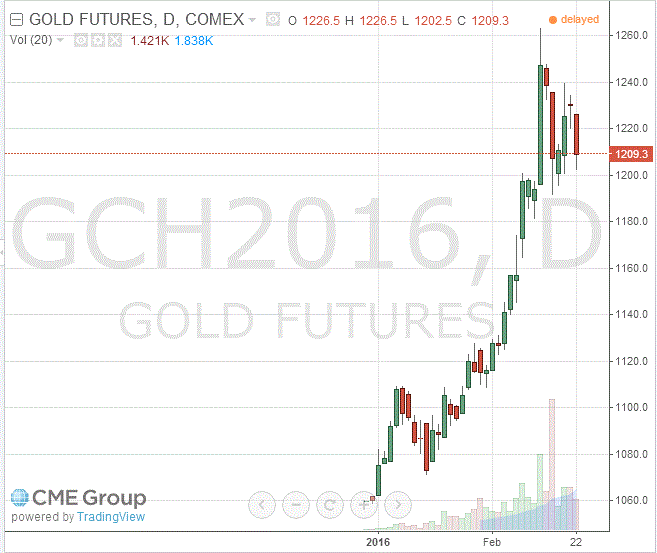- Gold declines more than 1%
Noticias del mercado
Gold declines more than 1%
Gold price declined on increasing demand for risky assets and a stronger U.S. dollar. The greenback remained supported by Friday's U.S. consumer price inflation data. According to the U.S. Labor Department, the U.S. consumer price index increased to 1.4% year-on-year in January from 0.7% in December, exceeding expectations for a rise to 1.3%. It was the biggest increase since October 2014. The U.S. consumer price index excluding food and energy increased to 2.2% year-on-year in January from 2.1% in December, beating expectations for a 2.1% rise.
Market participants speculate that the Fed will not raise its interest rate in March. They are focussed on the incoming U.S. economic data. Markit Economics released its preliminary manufacturing purchasing managers' index (PMI) for the U.S. on Monday. The U.S. preliminary manufacturing purchasing managers' index (PMI) plunged to 51.0 in January from 52.4 in January, missing expectations for a decline to 52.3. It was the lowest level since October 2012.
March futures for gold on the COMEX today fell to 1209.30 dollars per ounce.
